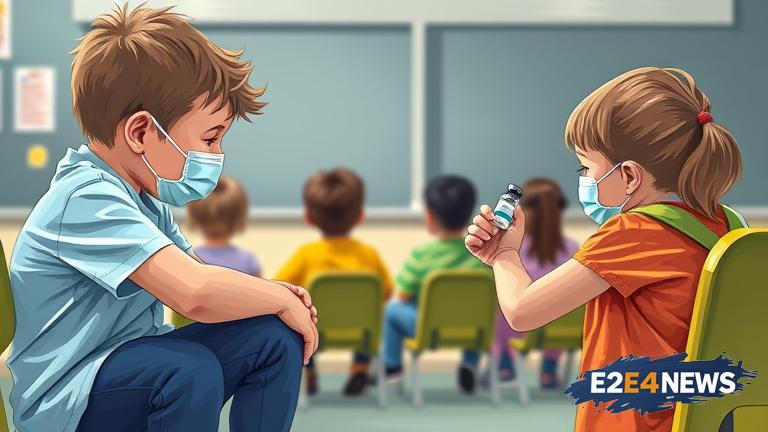As the new school year commences, medical experts are sounding the alarm over a disturbing trend: a decline in childhood vaccination rates. According to recent data, the number of children receiving recommended vaccinations has been steadily decreasing, leaving many vulnerable to preventable diseases. This downward trend has significant implications for public health, as it increases the risk of outbreaks and undermines the effectiveness of herd immunity. The Centers for Disease Control and Prevention (CDC) recommends a series of vaccinations for children, including those against measles, mumps, and rubella, as well as influenza and human papillomavirus (HPV). However, an increasing number of parents are opting out of these vaccinations, citing concerns over safety and efficacy. Medical experts argue that these concerns are unfounded and that the benefits of vaccination far outweigh the risks. In fact, numerous studies have consistently shown that vaccines are safe and effective in preventing the spread of infectious diseases. Despite this, misinformation and misconceptions about vaccines continue to spread, fueling the decline in vaccination rates. The consequences of this trend are far-reaching, with potential risks to not only individual children but also to the broader community. As schools reopen, the risk of outbreaks increases, particularly for diseases such as measles and whooping cough. Medical experts are urging parents to prioritize vaccination, emphasizing the critical role it plays in protecting public health. The decline in vaccination rates is not limited to any one region, with cases reported across the United States. In response, health officials are launching public awareness campaigns to educate parents about the importance of vaccination. These efforts aim to address common misconceptions and provide accurate information about vaccine safety and efficacy. Additionally, some schools are implementing policies to encourage vaccination, such as requiring students to provide proof of vaccination before attending classes. While these measures are a step in the right direction, medical experts argue that more needs to be done to address the root causes of the decline in vaccination rates. This includes addressing systemic barriers to access, such as cost and lack of healthcare provider availability. Furthermore, healthcare providers must work to build trust with parents, providing them with accurate and unbiased information about vaccines. By working together, it is possible to reverse the decline in childhood vaccination rates and protect the health and well-being of children and communities. The CDC and other health organizations are committed to promoting vaccination and preventing the spread of infectious diseases. As the new school year begins, it is essential that parents, healthcare providers, and policymakers prioritize vaccination and work together to address this critical public health issue. The health and well-being of our children depend on it. In conclusion, the decline in childhood vaccination rates is a pressing concern that requires immediate attention and action. By promoting vaccination and addressing the root causes of this trend, we can work towards a healthier and safer future for all.





